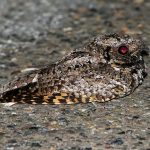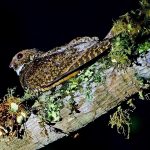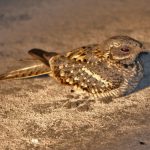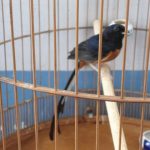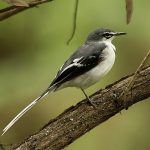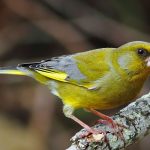Fiery-necked nightjar
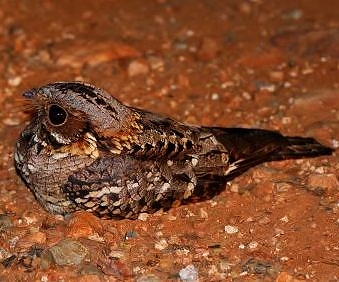
 |
| Photo by Dave Maguire (Wikipedia) |
Common name:
fiery-necked nightjar (en); noitibó-de-pescoço-dourado (pt); engoulevent musicien (fr); chotacabras músico (es); pfeifnachtschwalbe (de)
Taxonomy:
Order Caprimulgiformes
Family Caprimulgidae
Range:
This African species is found from southern Kenya and Tanzania, though southern D.R. Congo and Angola, and into northern Namibia, Zimbabwe, eastern Botswana and eastern South Africa down to the cape.
Size:
These birds are 22-24 cm long and weigh 35-70 g.
Habitat:
The fiery-necked nightjar is mostly found in dry savannas and woodlands with dense leaf litter for nesting and roosting, but also in dry scrublands, grasslands, plantations and rural gardens. They are present from sea level up to an altitude of 1.500 m.
Diet:
They are insectivorous and hunt from dusk to dawn, mainly eating beetles and moths, but also cockroaches, termites, lacewings, grasshoppers, bees, wasps, ants, flies, bugs and scale-insects.
Breeding:
Fiery-necked nightjars are monogamous and mate for life. The nest is a simple depression in the ground, usually in and surrounded by dense leaf litter, where the female lays 2 eggs. The eggs are incubated by both sexes for about 18-19 days, with the female incubating during the day while the male takes the night shift. The chicks are cared for by both parents. They start walking around the nest about 8 days after hatching, only being able to fly 3 weeks later. The parents usually desert their territory and chicks when they reach 30 days of age, but the brood only leaves the territory approximately 5 months later.
Conservation:
IUCN status – LC (Least Concern)
This species has a very large breeding range and is described as generally quite common. The population is suspected to be stable in the absence of evidence for any declines or substantial threats.

